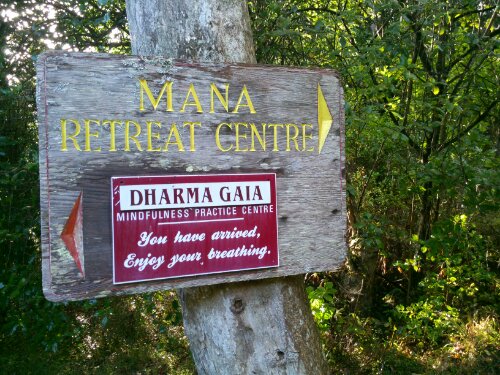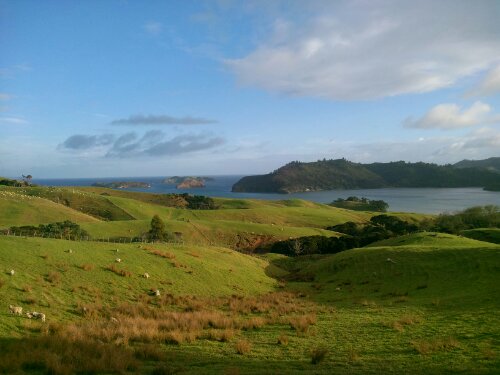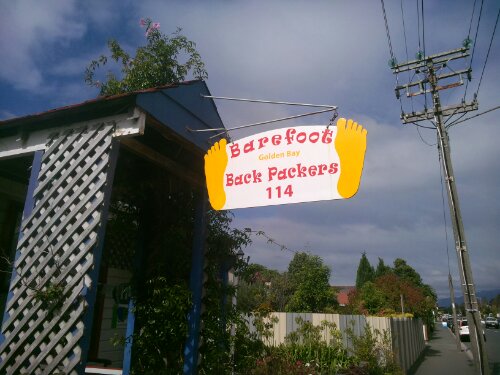In my last post I was speaking from a very heart centered place. In the next couple of posts, I’d like to translate some of what I have been learning into more intellectual language. I’d like to start by taking a look at the classical Chinese understanding of the relationship between mind and body.
Shen–>Xin–>Yi–>Qi–>Xue–>Shen
Spirit–>Mind–>Intentional Mind–>Life force–>Blood–>Body
This flow represents the connection between mind and body in progressively more physicalized, denser form. Spirit informs the mind, mind directs the intention, intention guides life force, life force moves the blood, blood acts on the body. It implies that our existence is an informational stream, whether that information is mental, emotional, or physical. For those of you with a background in Yogic Philosophy, I find this idea very similar to the concept of the five koshas, or sheathes of existence. Most what follows is from my own experience, so it is possible I may veer somewhat from exact definitions. Lets break each segment down:
Shen- Spirit:
Shen represents your innate capacity for connecting with universal love, clear perception (not influenced by past experience), and the interconnectedness of life. In my mind spirit is a universal field which unites all life but but which typically becomes obscured in human experience, for various reasons. Shen in particular refers to the spiritual essence within ourselves that can realize it. It is said to reside deep in the heart. Studies have shown that the electro-maggnetic field of the human heart is many times stronger than that of the brain, and it has been posited that this electromagnetic field serves as a harmonizing priciple throughout the body! No wonder that in eastern thinking, the heart is considered the seat of consciousness.
Xin- Mind
Interestingly, in many Eastern cultures there is little distinction between mind and heart, and indeed this is so in the Chinese understanding. In Dr. J’s language, if the Shen is the emperor, the Xin is castle surrounding him.
In my understanding, the Xin represents our thought-forms (thoughts have forms, isn’t that interesting?!) and sensory impressions that form the fabric of our personality. Really, our personality boils down to a binary language- attachment and aversion. When we have an experience that comes in through the senses, that experience produces a feeling. We may cling to this feeling as a source of identity, always seeking it, or we may reject it as unwanted or ‘not me.’ Thus some feelings become looped as repeated sources of comfort while others are sequestered and walled off, fragmenting us and forming a unique personality in the process. Our thoughts are simply layered on top of these feelings, and the self is what we call this conglomerate. The mind is making these decisions (or not, if you’ve trained yourself) each moment. As we shall soon see, this information is then carried on down the chain into more physical form.
This is why mystical traditions speak of desirelessness and non-attachment. If one can be completely open to the myriad experiences of life, universal love can shine through and your sense of self thins. Buddhist practice in particular works with the mind, reprogramming attachment and aversion into spacious acceptance and love. The mind becomes clear and empty, no longer obstructing spirit, like the sun in a cloudless sky. Spirit can then inform all our actions. This is why in most Buddhist practice no attempt is made to change your state of being– it is all grist for the mill, clouds to be parted.
Yi- intentional mind
The Xin guides the Yi, or intent. What is the Yi? Hmm good question, I’m still working on a full definition. Let’s start by saying its your autopilot– the part of your mind that pulls your hand away from a hot stove, or drives your car seemingly without your attention. When you are stressed, it is the lump in your throat, the way you bite your fingernails, or shuffle your feet aimlessly . The Yi controls the subconscious physiological responses–both postural and deeply internal– formed by the impressions of the mind. Your Yi is the part of your mind that has lifted your shoulders when your yoga teacher tells you to drop them 🙂
It is also the part of the psyche that guides the flow of Qi, or life force. Without training, this process is unconscious in most people. It is the part of the mind we can train through yoga, meditation or taiji to feel the body without the need for sensory stimulation. For this reason I like to call it the ‘feeling mind.’
Qi – life force
Perhaps the most difficult to describe, Life-force. Qi can be felt as a substance of varying densities, but has no real independent form. It is the medium through which the multitudinous processes of life receive their coherence and integrity. It can be seen in the body in the communication between organs systems and tissues, transformative metabolic force, and the warmth and nourishment of the body itself.
Information, including qi, flows through us along meridians. Think of a suspension bridge. When vehicles drive over a bridge, their weight is applied through the surface of the roadway and into the bridge’s support structure through struts and wires. In effect this is distributing and translating the force of the car. The same is true when you go running or do a pushup. In both cases, the force of the earth needs to be translated through your system. Your physical integrity is determined by how quickly the translation can occur (flexibility) and under how much pressure (strength). The struts and wires of your body are your meridians. The major meridians run in the fascia between your muscles, interconnecting muscular systems. Not only is this happening at a kinesthetic or gross level, but also at a metabolic or subtle level. Metabolic information (Qi) is flowing through the same system, coordinating the physiological functions of your body. This is why in Yoga or Taiji, proper alignment is very important– it is the foundation for being able to work with life force.
Different from Buddhist practice, systems that work with Qi opt to strengthen the body so that more life force can be accumulated. Having more Qi puts more juice in the system, helping the body to heal. At a certain point, the surplus of Qi begins to strengthen the Shen or spiritual nature. As the shen becomes stronger it is capable of piercing through the attachments of the mind. Instead of waiting for the clouds of the mind to part, this is like amplifying the sun so that it burns through them.
Xue- Blood
Another one I am still working out. Blood follows the Qi, which is to say that the principle of nourishment (in the form of oxygen and nutrients) follows the principle of communication (Qi). Where the qi goes the blood flows. Thus it follows that if there is a blockage in the flow of Qi to a particular part of the body, communication with that part of the body shuts down, and blood circulation decreases.
Lets return for a moment to the idea of mental impressions. If we experience a particular feeling that the mind is averse to, this feeling can become repressed, cut off from the center of our consciousness in the heart. This is kind of like a file buried deep in your computer’s hard drive. This file, this feeling, takes up informational space! Communication to this part of the body (feelings arise in the body) degrades, thus Qi flow is obstructed, blood flow decreases. We have the beginnings of illness, the origin of which is in the mind! Thus it is also said that ‘blood is the matrix of the mind.’
Shen- Body
A different shen! Not the same word. Here we have our physical tissues. The last link in the chain. Whereas western thinking sees the physical body as primary, the mind arising therefrom, eastern thought sees the mind as primary, giving birth to the body. Thus modern medicine works with the body, adding and subtracting chemicals, cutting it open and sewing it together, relatively unaware that it is the final product in a long assembly line.
While it is true that some ailments are purely physical, like breaking your arm, most disease is compounded by if not created by mental and emotional stress. Furthermore, the capacity of the body to heal from ANY situation is dependent on the interconnection of the whole being, as we have been discussing.
Many systems of alternative health are also aimed exclusively at treating the body through food and cleansing of toxins. Many people these days are subtracting foods that don’t seem to work for them like gluten, dairy, meat, grain, etc. I am convinced that at least some of these sensitivities are rooted in the mental-emotional body. While it is certainly a good idea at times lighten the demands on the body and clean it out, we must realize that unless we address the mind and emotions we are not getting to the roots of what causes illness.
Now that we understand the system we are working with, lets take a quick look at what we can do with it.
Apaphatic Practices-
These are practices that empty. They reduce the amount of information in the stream, removing obstacles so that spirit can penetrate all the way into our bones. Most Buddhist practices are apaphatic (with perhaps the exception of Vajrayana or Tibetan Buddhism) and focus on dissolving our mental attachments as mentioned earlier.
Raw foods, which I recently experimented with, I would also consider apaphatic. You are eating a maximal amount of nutrition while significantly reducing caloric intake. This puts a lot of ‘space’ in the system which allows information to flow more smoothy downstream–the body to releases toxins and dormant mental/emotional conflict surfaces. Oftentimes, however, it takes years for the body to adjust to this program.
Fasting is another obviously apaphatic practice, giving the body space to process information of all sorts. This is why its called a fast! One might fast not just from food, but also from mental distractions or activities that are emotionally draining.
Kapaphatic Practices
Kapaphatic practices fill you, adding information to the stream. Their goal is to add so much force to your being that obstructions are washed away. Practices that build Qi are kapaphatic, using the increased life force to push physical toxins out of the body, strengthen the spirit, and burn away obstructions in the mind.
Many spiritual practices claim supreme authority as ‘the best’ or ‘the only’ way to transformation. Many teachers also claim you must choose one path. The same is true of many diets or healing techniques. However, if we can see disparate techniques as simply addressing different links in the chain, conflict resolves. As long as you are clear with yourself and know what you are working, and how, its all good.






